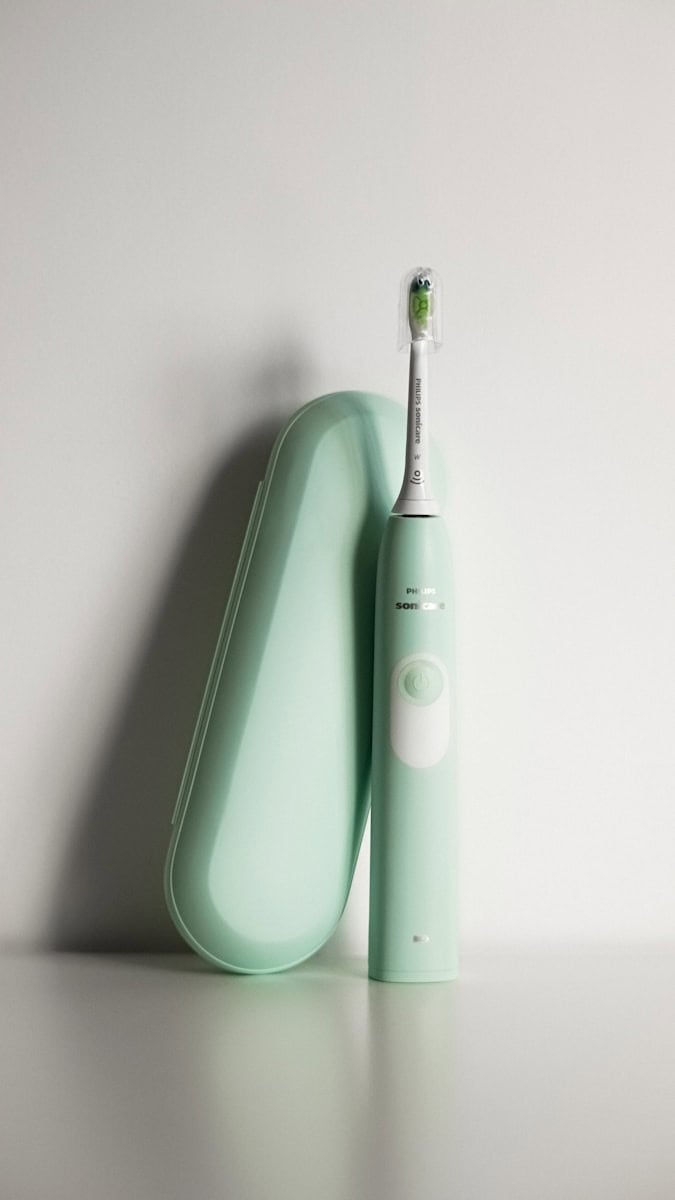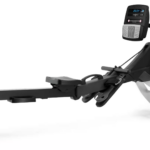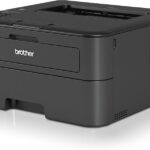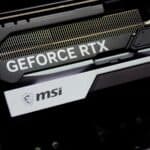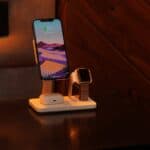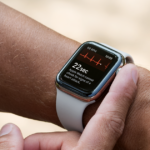Disposing of your Sonicare electric toothbrush properly helps protect the environment. Many people don’t know how to get rid of these devices safely. To dispose of a Sonicare toothbrush, remove the brush head, recycle the battery if possible, and discard the handle in electronic waste.
Sonicare toothbrushes contain rechargeable batteries and electronic parts that need special handling. You can’t just throw them in the trash. Proper disposal prevents harmful chemicals from leaking into soil and water. It also allows valuable materials to be reused.
There are a few simple steps to dispose of your old Sonicare toothbrush responsibly. We’ll cover the process in detail and explain eco-friendly options. You’ll learn how to prep your toothbrush for disposal and where to take it.
| Toothbrush Part | Disposal Method |
|---|---|
| Brush Head | Regular trash |
| Battery | Recycle |
| Handle | E-waste |
Disposing of Your Sonicare Electric Toothbrush Responsibly
It’s important to dispose of your Sonicare electric toothbrush properly to minimize environmental impact. Here’s a breakdown of how to do it:
1. Remove the Battery
- Most Sonicare toothbrushes have built-in rechargeable batteries that cannot be easily removed. This is because they are sealed within the handle for safety and waterproofing.
- Do not attempt to disassemble the toothbrush or remove the battery yourself. This could damage the device and potentially expose you to harmful chemicals.
2. Check with Your Local Recycling Center
- Contact your local recycling center or e-waste facility. They may have specific guidelines or programs for recycling electric toothbrushes and batteries.
- Some retailers or manufacturers may also have take-back programs. Check the Sonicare website or contact customer support for information.
3. Consider Mail-in Recycling Programs
- Several organizations offer mail-in recycling programs for batteries and small electronics. Search online for “battery recycling” or “e-waste recycling” to find programs in your area.
- TerraCycle is one example of an organization that offers free recycling programs for various products, including oral care waste.
4. Dispose of as E-waste
- If no other options are available, dispose of your Sonicare toothbrush as electronic waste (e-waste).
- Many municipalities have designated e-waste collection points or events. Check your local government’s website for information.
- Do not throw your toothbrush in the regular trash. Batteries and electronic components can contain harmful materials that should not end up in landfills.
| Disposal Method | Description |
|---|---|
| Local Recycling Center | Contact your local center for guidelines |
| Retailer/Manufacturer Take-Back Program | Check for programs offered by Sonicare or retailers |
| Mail-in Recycling Program | Use a service like TerraCycle |
| E-waste Disposal | Dispose of at designated e-waste collection points |
Environmental Impact
- Proper disposal of electric toothbrushes helps reduce electronic waste and prevents harmful materials from polluting the environment.
- Recycling batteries helps conserve resources and reduces the need to mine new materials.
By taking these steps, you can ensure your Sonicare toothbrush is disposed of in an environmentally responsible manner.
Understanding Electric Toothbrush Components
Electric toothbrushes have several key parts that work together. Knowing these components helps when it’s time to dispose of your device properly.
Identifying Rechargeable Battery
The rechargeable battery is a crucial part of your electric toothbrush. It’s usually built into the handle and not meant to be replaced by users.
Most Sonicare models use lithium-ion batteries. These power the brush for weeks on a single charge. You can’t see the battery from the outside.
To find it, you’d need to open the handle. But don’t try this at home. It’s unsafe and may damage the device.
Some older models might have removable batteries. Check your user manual to be sure.
| Battery Type | Location | User Replaceable? |
|---|---|---|
| Lithium-ion | Handle | No |
| NiMH | Handle | Rarely |
Recognizing Metal Components
Your electric toothbrush contains various metal parts. These include the motor, wiring, and sometimes the charging coil.
The motor is in the handle. It creates the vibrations or rotations that clean your teeth. You can often feel its weight in the lower part of the handle.
Wiring connects the battery to the motor and other electronic parts. It’s hidden inside the plastic casing.
Some models have a metal shaft that connects to the brush head. This transfers motion from the motor.
Disassembling the toothbrush can reveal these components. But remember, taking apart your device should only be done when you’re ready to dispose of it.
Preparation for Recycle or Disposal
Proper preparation of your Sonicare electric toothbrush for recycling or disposal is crucial. This process involves separating electrical components and thorough cleaning to ensure safe and eco-friendly handling.
Separating Electrical Parts
Start by removing the brush head from your Sonicare toothbrush. Twist it counterclockwise and pull it off. Set it aside for separate disposal. Next, unplug the toothbrush from its charging base.
For models with removable batteries, carefully extract them. These require special handling at battery recycling facilities. If your model has a built-in battery, do not attempt to remove it yourself. This task is best left to professionals due to safety concerns.
Cut the power cord about 2 inches from the plug using scissors. Cover exposed wires with electrical tape to prevent shock hazards. This step is crucial for safety during the recycling process.
Cleaning and Dismantling
Clean your toothbrush thoroughly before recycling. Remove any dirt, toothpaste residue, or buildup. Use a mild soap and warm water to clean the handle and base. Dry all parts completely to prevent any electrical issues during recycling.
For further dismantling, consult your toothbrush’s manual or the manufacturer’s website. Some models allow for easy separation of plastic and metal parts. Others may require professional handling.
| Component | Disposal Method |
|---|---|
| Brush Head | Regular trash |
| Removable Batteries | Battery recycling facility |
| Handle (with built-in battery) | Electronics recycling |
| Charging Base | Electronics recycling |
Remember, many electronic recycling programs accept electric toothbrushes. Check with local recycling centers or the manufacturer for specific recycling options in your area. Proper disposal reduces environmental impact and promotes responsible waste management.
Local Recycling Solutions
Many communities offer convenient options for recycling electric toothbrushes. These programs help divert electronic waste from landfills and recover valuable materials.
Electronic Waste Facilities
Local recycling centers often accept small electronics like electric toothbrushes. Check your city’s website to find nearby e-waste drop-off locations. Some retailers like Best Buy also have recycling programs for electronics.
When recycling your Sonicare toothbrush:
- Remove the rechargeable battery
- Separate plastic parts from metal components
- Clean the toothbrush thoroughly
- Place parts in designated e-waste bins
Many facilities can recycle over 90% of electric toothbrush materials. Plastics get melted down for new products. Metals are extracted and reused in manufacturing.
Battery Recycling Programs
The rechargeable battery in your Sonicare toothbrush requires special handling. Call2Recycle offers free battery recycling at many retail locations.
To recycle the battery:
- Remove it from the toothbrush handle
- Place clear tape over the battery terminals
- Drop it off at a participating store
| Common Battery Drop-Off Locations |
|---|
| Home Depot |
| Lowe’s |
| Staples |
| Best Buy |
Proper battery recycling prevents hazardous materials from contaminating soil and water. It also recovers valuable metals like lithium, cobalt and nickel for reuse in new batteries.
Repair and Reuse Options
Before discarding your Sonicare electric toothbrush, consider repair or reuse options. These approaches can extend the life of your device and reduce electronic waste.
Exploring Repair Services
Philips offers repair services for some Sonicare models. Check their website for warranty information and authorized service centers. Local electronics repair shops may also fix common issues like battery replacement or charging problems.
DIY repairs are possible for minor problems. YouTube tutorials can guide you through simple fixes like cleaning charging contacts or resetting the device. However, be cautious when opening the toothbrush to avoid damaging internal components.
For charger issues, contact Philips customer service. They might provide a replacement under warranty or offer discounted options for out-of-warranty devices.
Reuse in the Community
Donate working Sonicare toothbrushes to local charities or dental clinics. Many organizations accept gently used electric toothbrushes for those in need. Clean and sanitize the device thoroughly before donating.
Consider repurposing your old Sonicare. The vibrating mechanism can be useful for craft projects or as a small parts cleaner. Remove the battery first for safety.
| Reuse Option | Benefits | Considerations |
|---|---|---|
| Donation | Helps others, reduces waste | Ensure good working condition |
| Repurposing | Creative reuse, extends life | Remove battery, clean thoroughly |
Schools or community centers might accept old toothbrushes for art projects or science experiments. This option teaches children about recycling and creative reuse.
Frequently Asked Questions
Proper disposal of Philips Sonicare toothbrushes involves specific steps and considerations. Here are key points to remember when recycling or disposing of your electric toothbrush.
What are the steps for recycling a Philips Sonicare toothbrush?
To recycle your Sonicare toothbrush, first remove the brush head. Dispose of the head in regular trash. Next, unplug the toothbrush from its charging base.
For safety, do not attempt to remove the battery yourself. A qualified professional can remove and recycle the battery properly.
Where can I find electric toothbrush recycling locations?
Check with local recycling centers or electronics stores for toothbrush recycling options. Many communities have special collection events for electronic waste.
Some retailers like Best Buy often accept small electronics for recycling. You can also search online for e-waste recycling programs in your area.
How should I properly remove a battery from an electric toothbrush before disposal?
For safety reasons, do not try to remove the battery from your Sonicare toothbrush yourself. The battery is not designed to be replaceable by users.
Instead, take your toothbrush to a qualified professional or recycling center. They have the tools and expertise to safely remove and recycle the battery.
Are there specific electronics recycling programs for disposing of electric toothbrushes?
Many electronics recycling programs accept small appliances like electric toothbrushes. Check with your local waste management authority for e-waste recycling options.
Some manufacturers also offer mail-in recycling programs for their products. Contact Philips customer service to inquire about any available recycling initiatives for Sonicare toothbrushes.
Can electric toothbrush heads be recycled alongside the toothbrush itself?
Toothbrush heads typically cannot be recycled with the main unit. Dispose of brush heads in regular trash.
The bristles and small plastic components make recycling difficult. Focus on recycling the toothbrush handle and charging base instead.
What should be done with an electric toothbrush that is no longer functioning?
For non-functioning toothbrushes, follow the same recycling steps as working units. Remove the brush head and dispose of it separately.
Take the toothbrush to an electronics recycling center or participate in a manufacturer’s recycling program if available. Do not throw the entire unit in regular trash.
| Component | Disposal Method |
|---|---|
| Brush Head | Regular trash |
| Handle | Electronics recycling |
| Charging Base | Electronics recycling |
| Battery | Professional removal and recycling |

